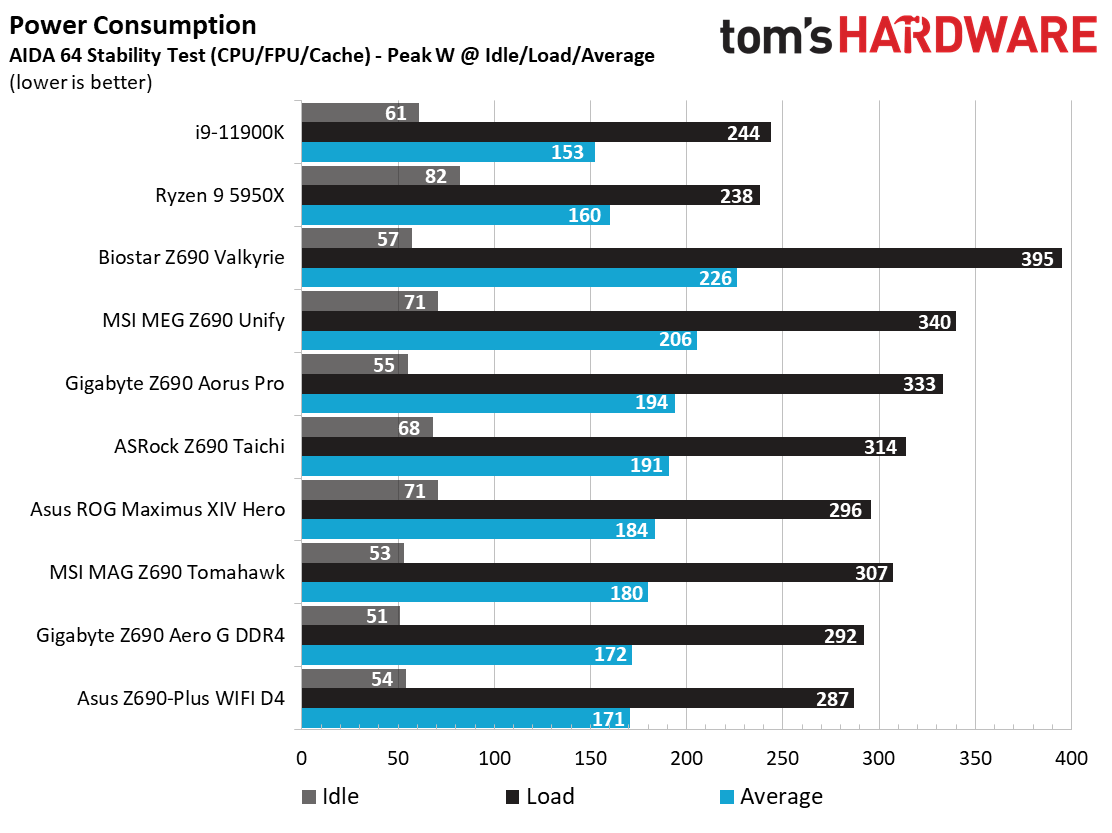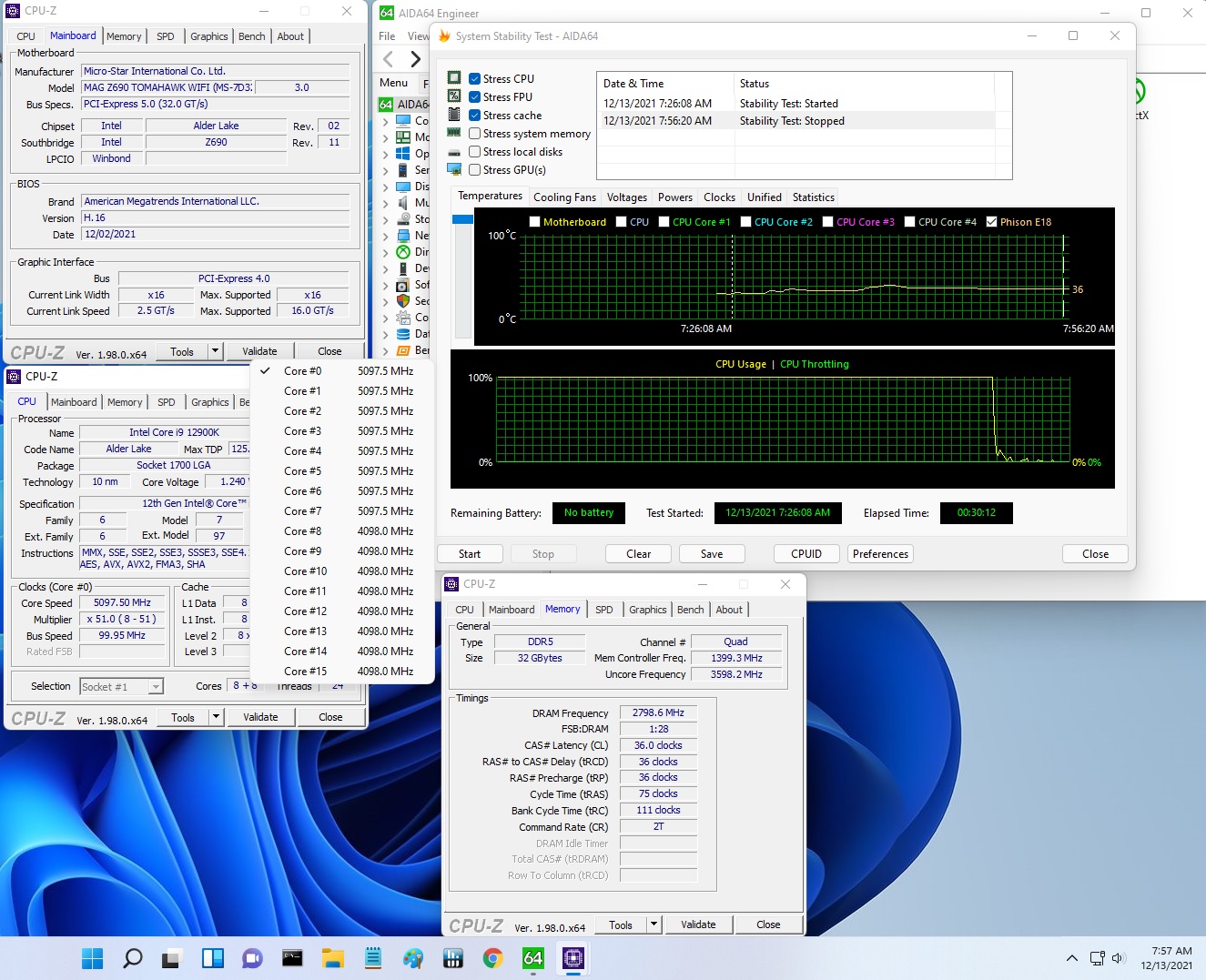Why you can trust Tom's Hardware
Our standard benchmarks and power tests are performed using the CPU’s stock frequencies (including any default boost/turbo), with all power-saving features enabled. We set optimized defaults in the BIOS and the memory by enabling the XMP profile. For this baseline testing, The Windows power scheme is set to Balanced (default), so the PC idles appropriately. To get the most out of the Intel Alder Lake chips, you need to be on Windows 11 with its updated scheduler. In most cases, Windows 10 performs well. However, some tests (Cinebench R20, Corona and POVRay) take a significant hit. In short, if you’re going with Alder Lake, you must upgrade to Windows 11 for the best results across the board. That may change with patching and updates. We’ll keep you posted.
Synthetic Benchmarks
Synthetics are a great tool to determine how a board runs, as identical settings should produce similar performance results. Turbo boost wattage and advanced memory timings are places where motherboard makers can still optimize for either stability or performance, though, and those settings can impact some testing.

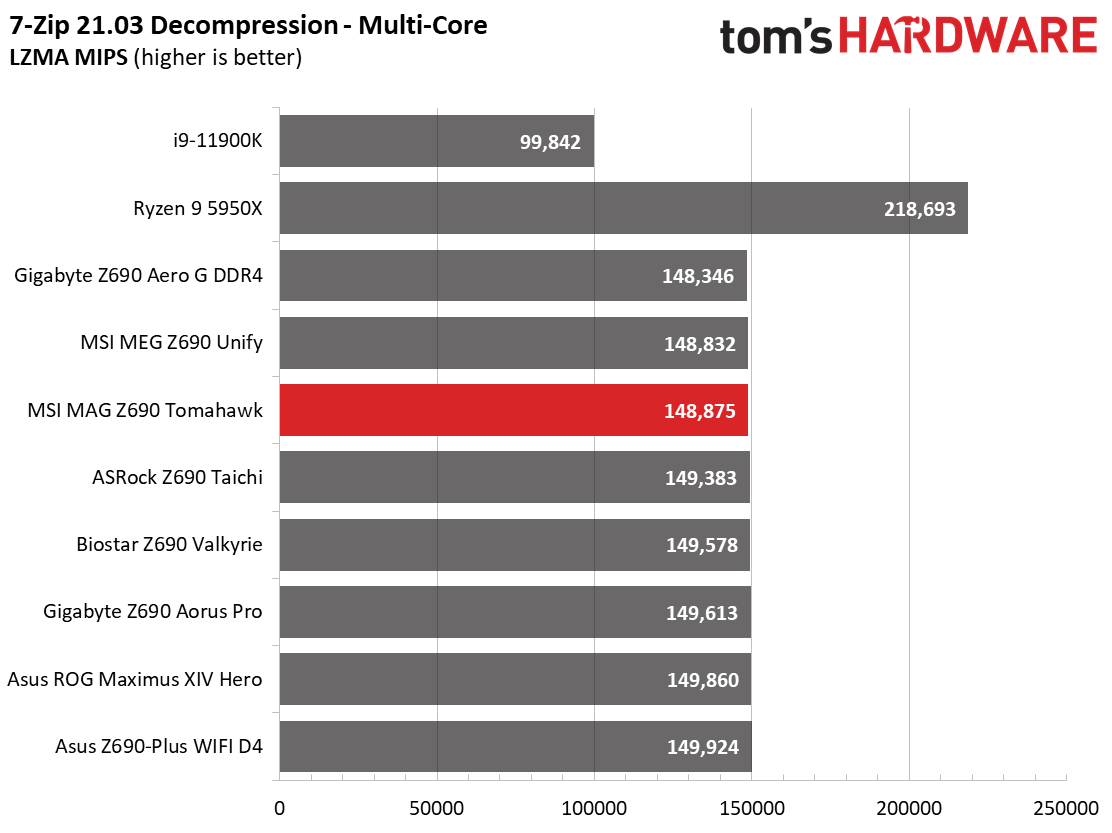
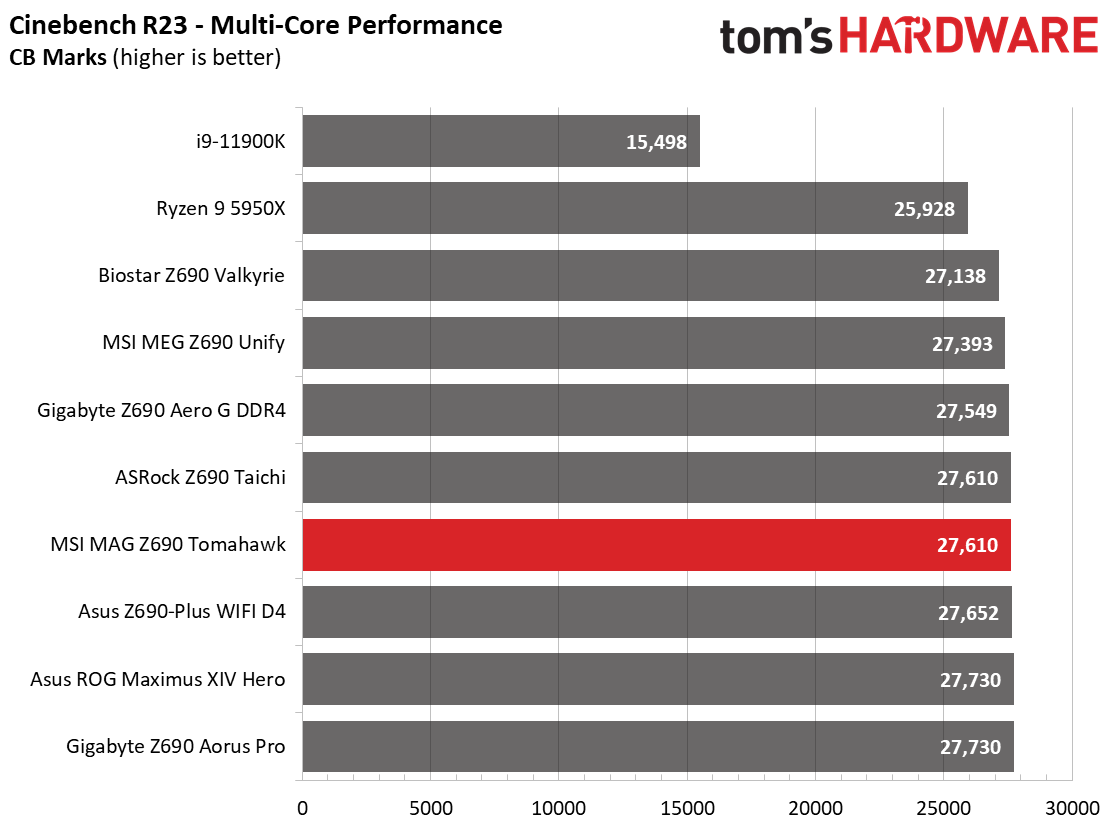


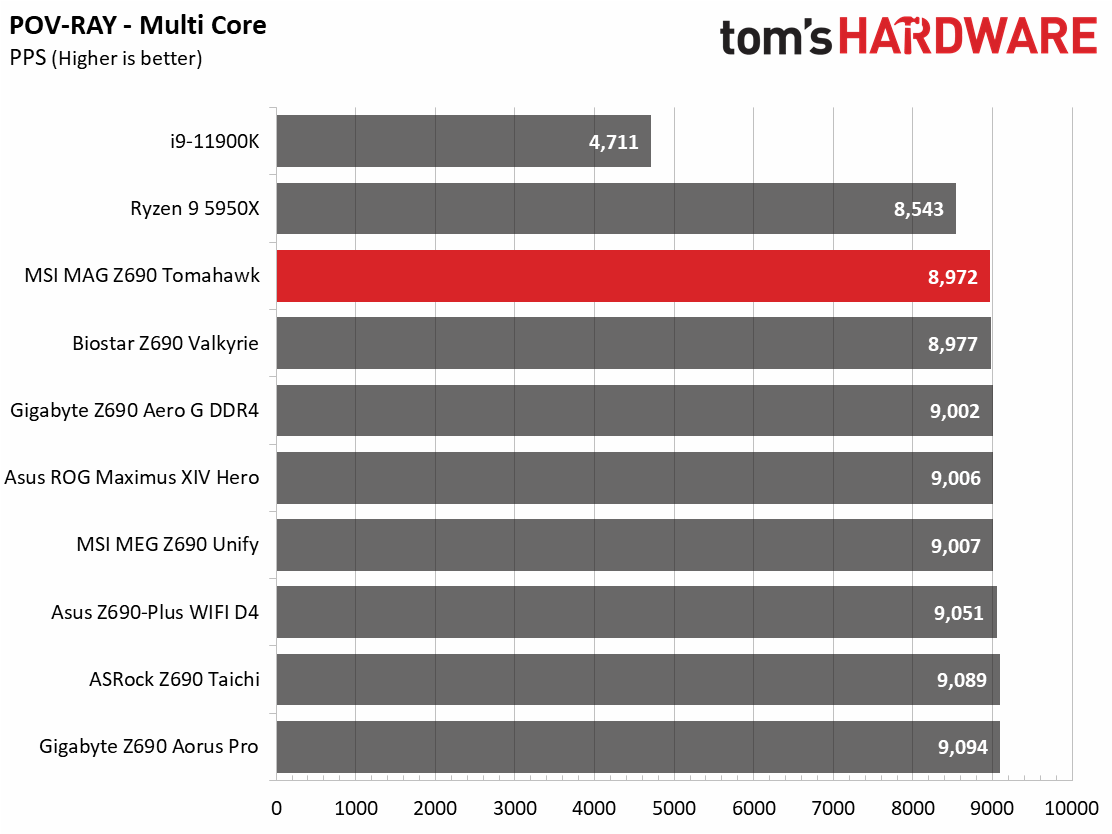
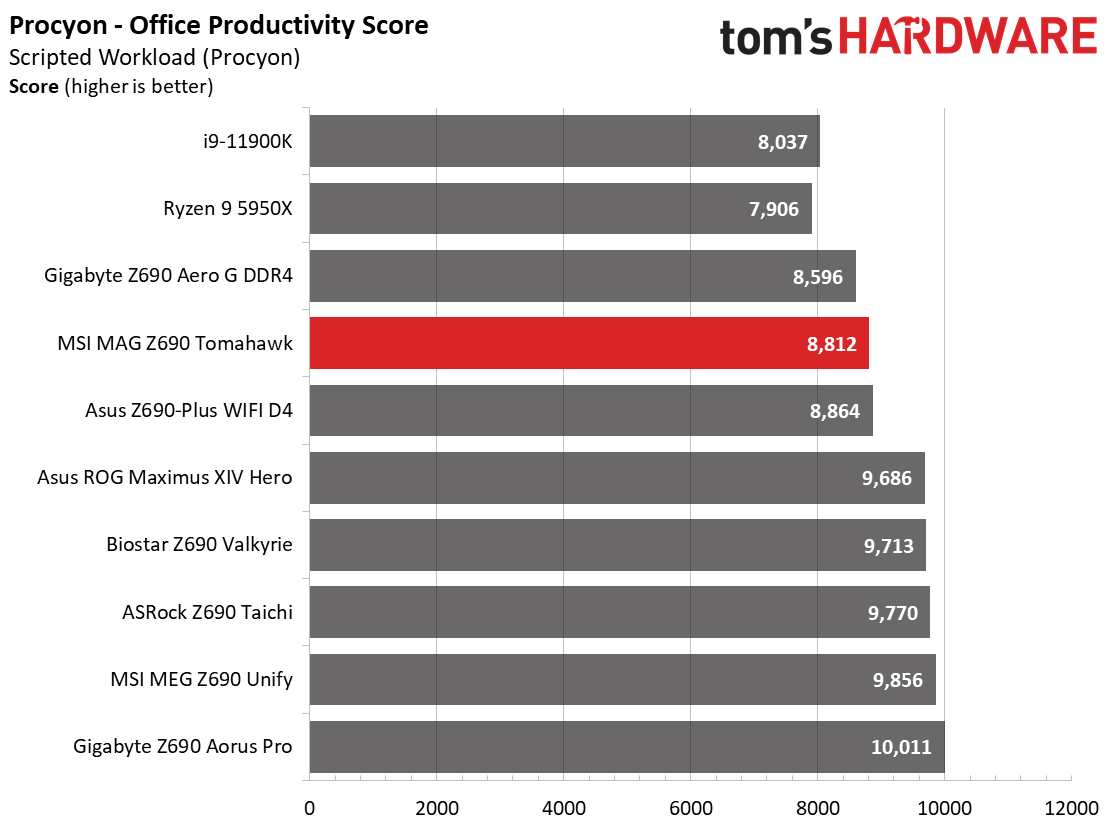
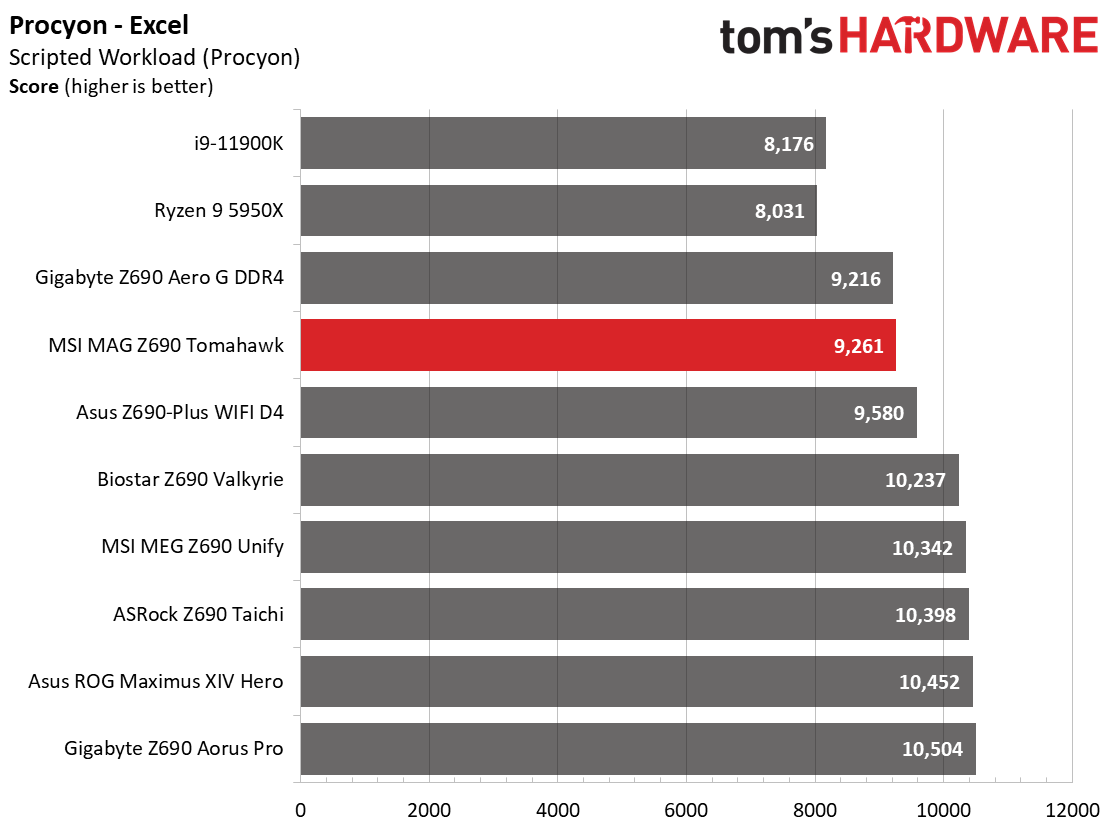
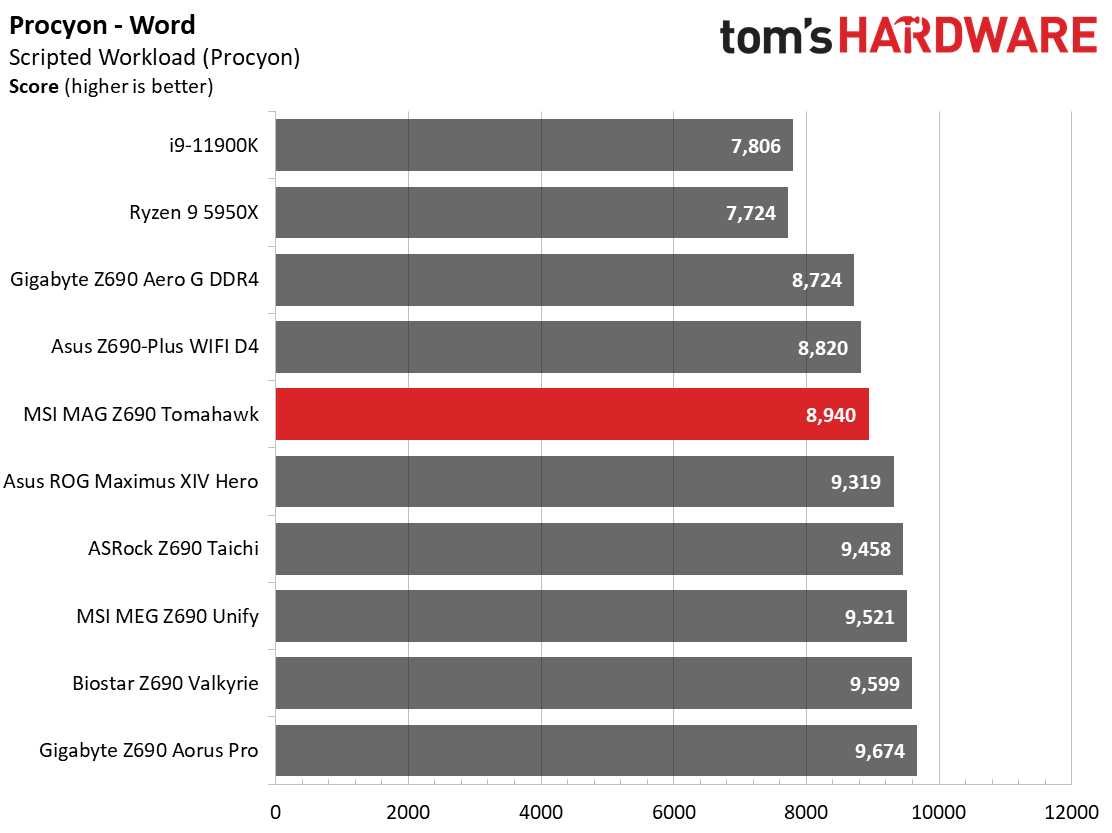
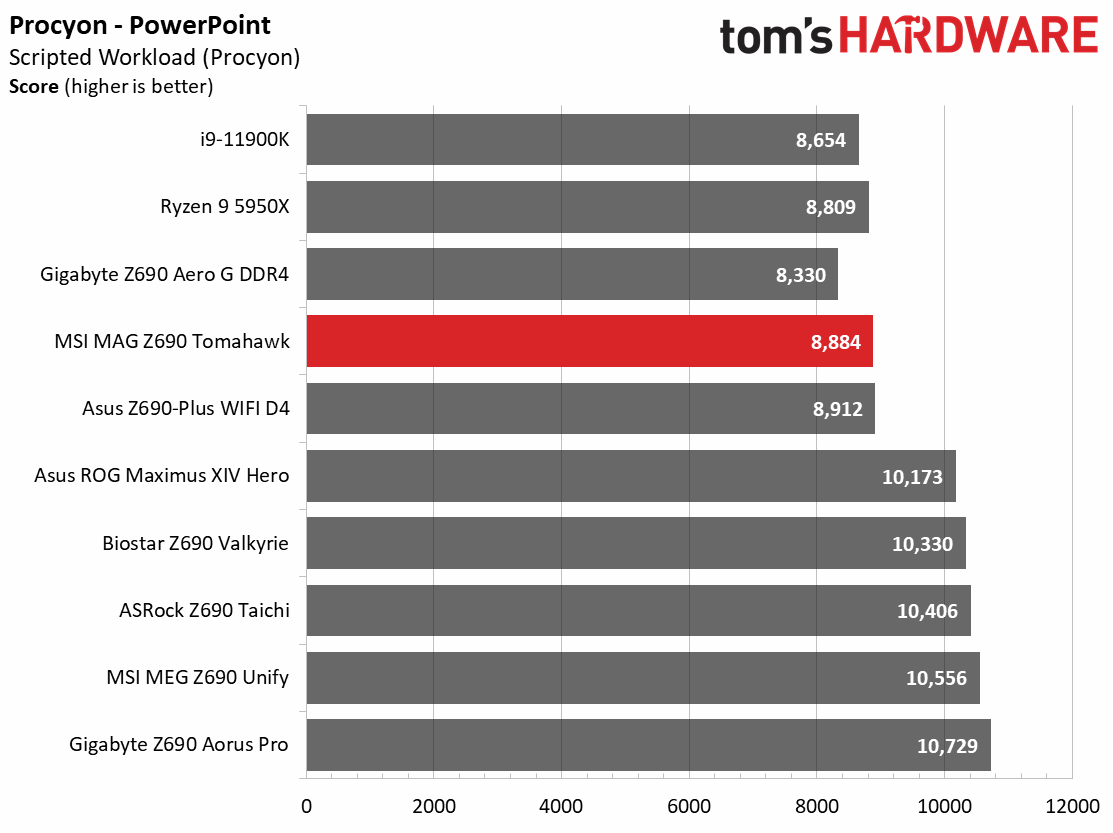
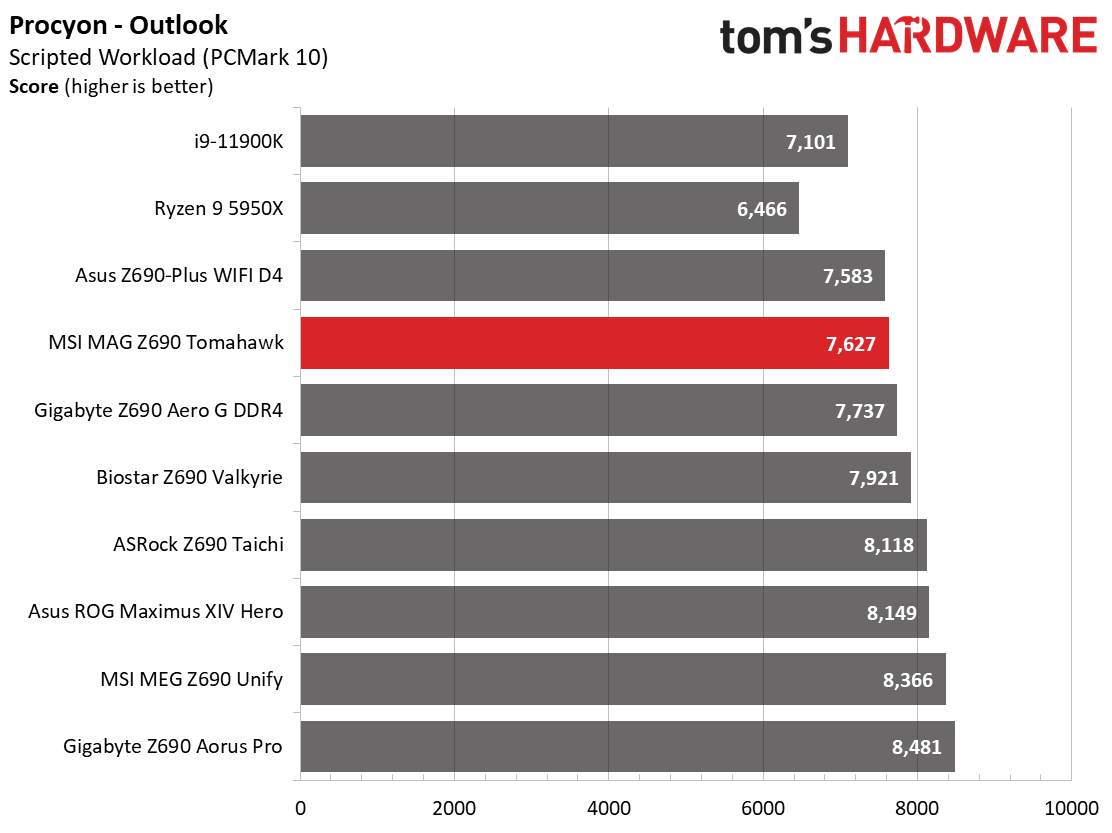


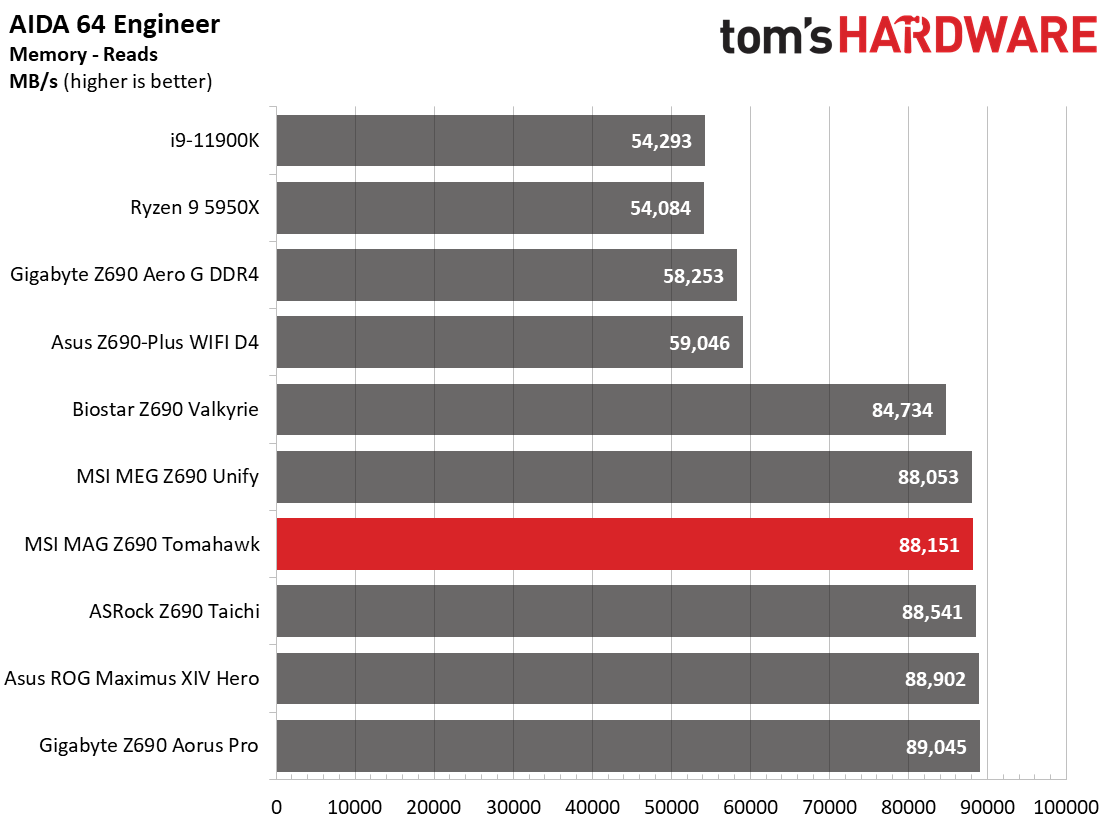

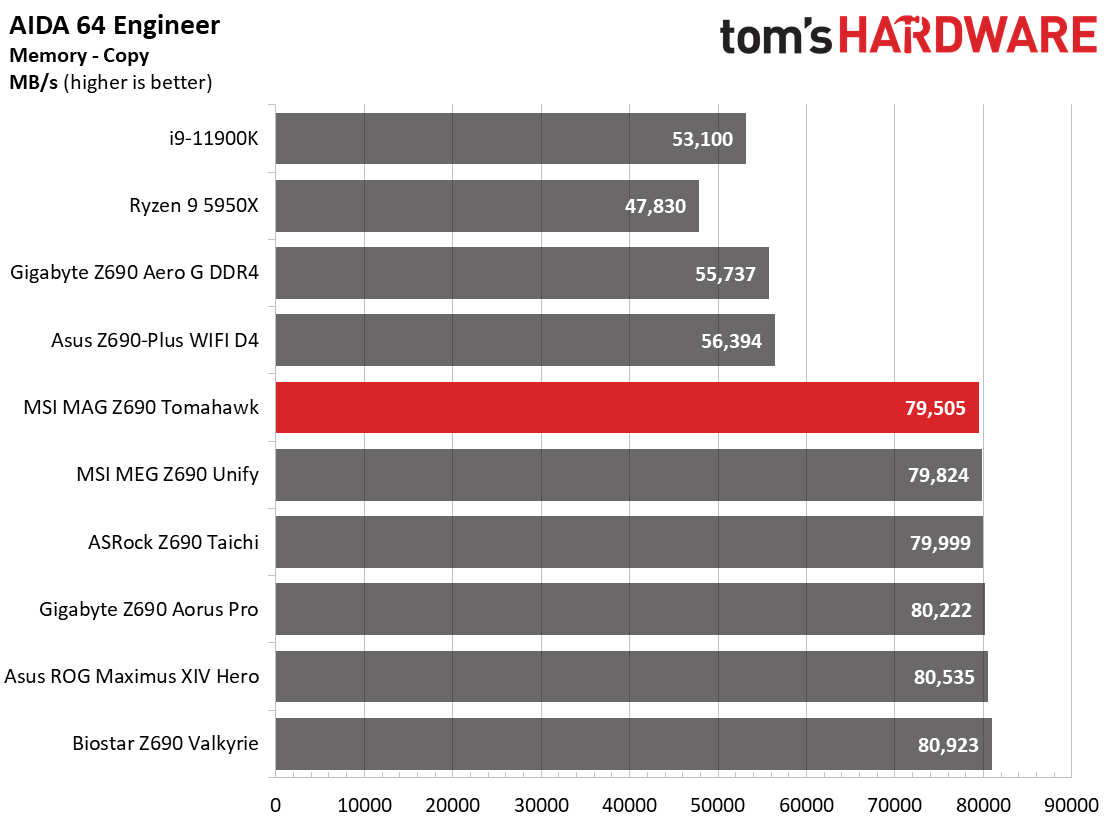
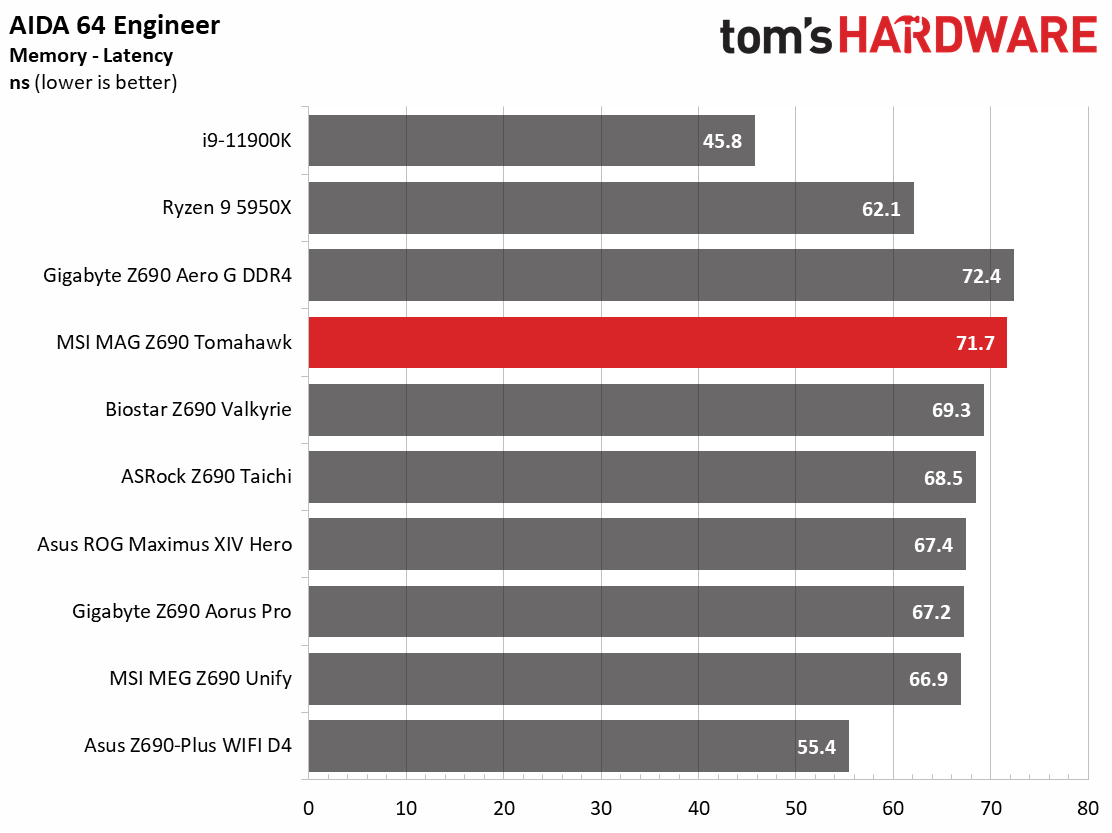
The Z690 Tomahawk performed well overall in our synthetic benchmarks, trading punches with the other Z690 boards. Although it was slower than most in the Procyon Office suite, the rest of the results were spot on and within the margin of error.
Bandwidth results in the AIDA tests place the Tomahawk behind many of the other DDR5 boards, but not by much. Latency was a couple of percent higher too. Like we’ve seen before, the differences are so minor that, in most cases, it’s inconsequential.
Timed Applications
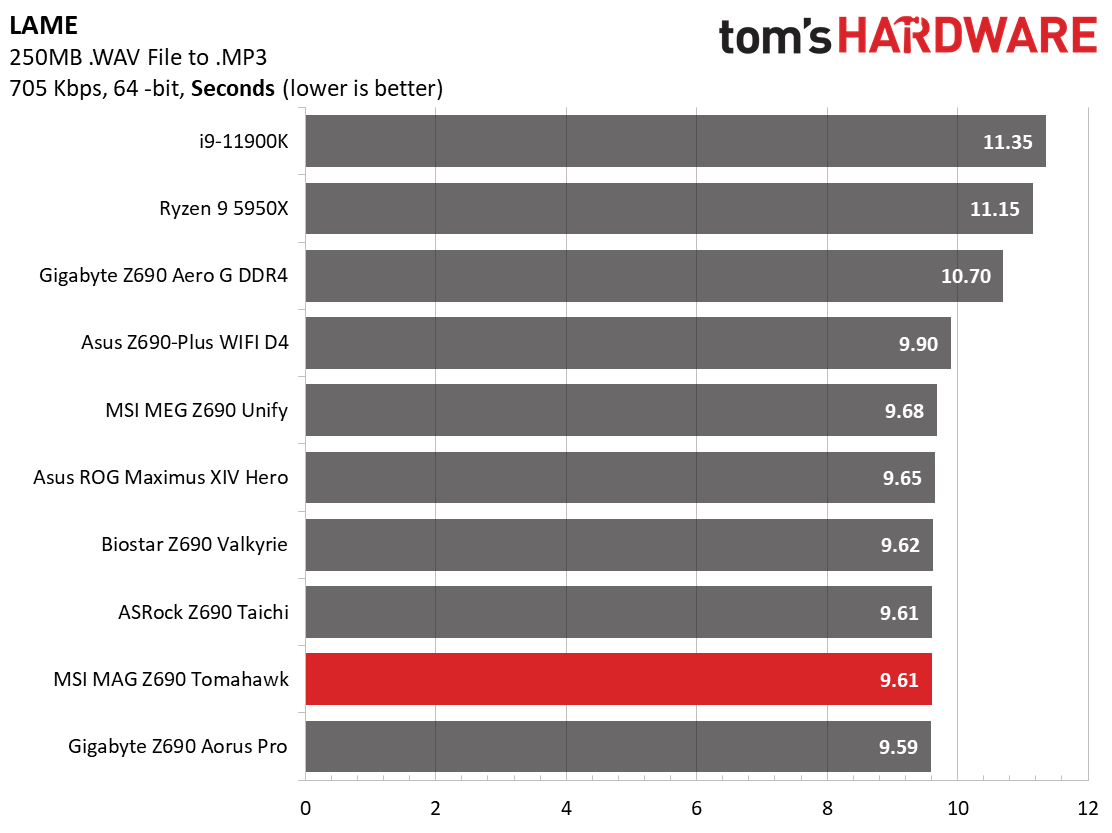
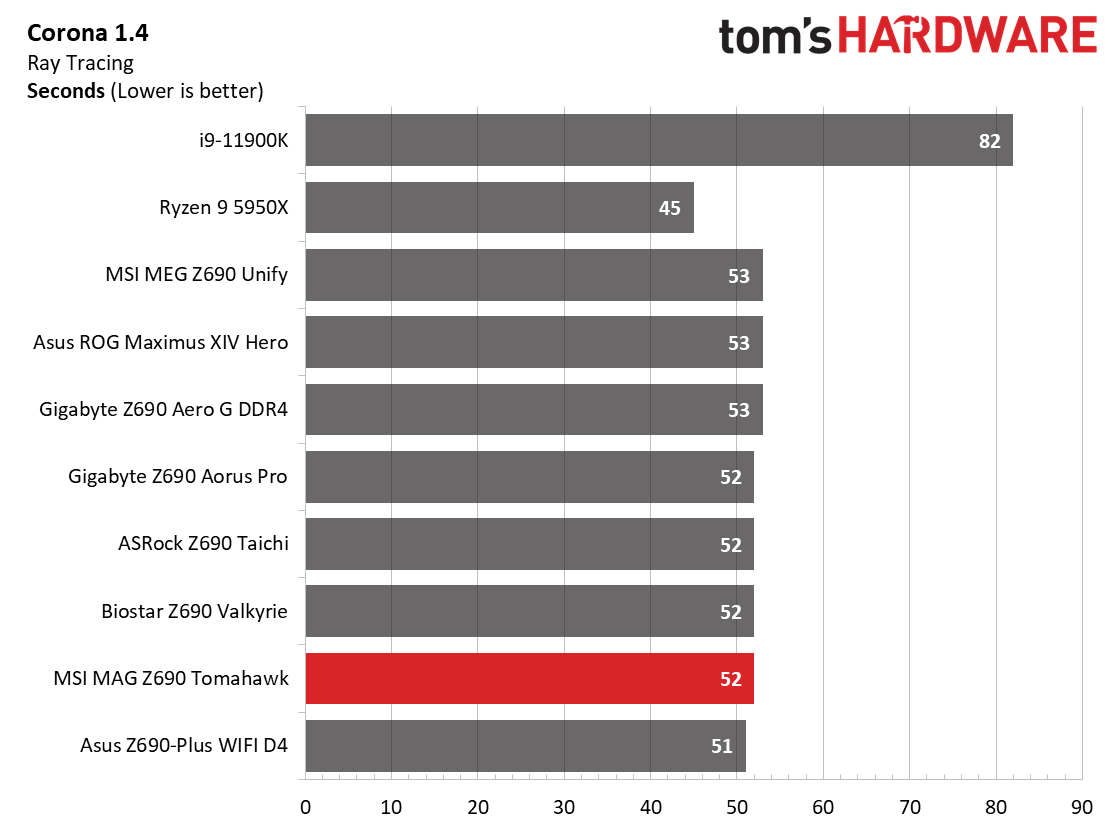

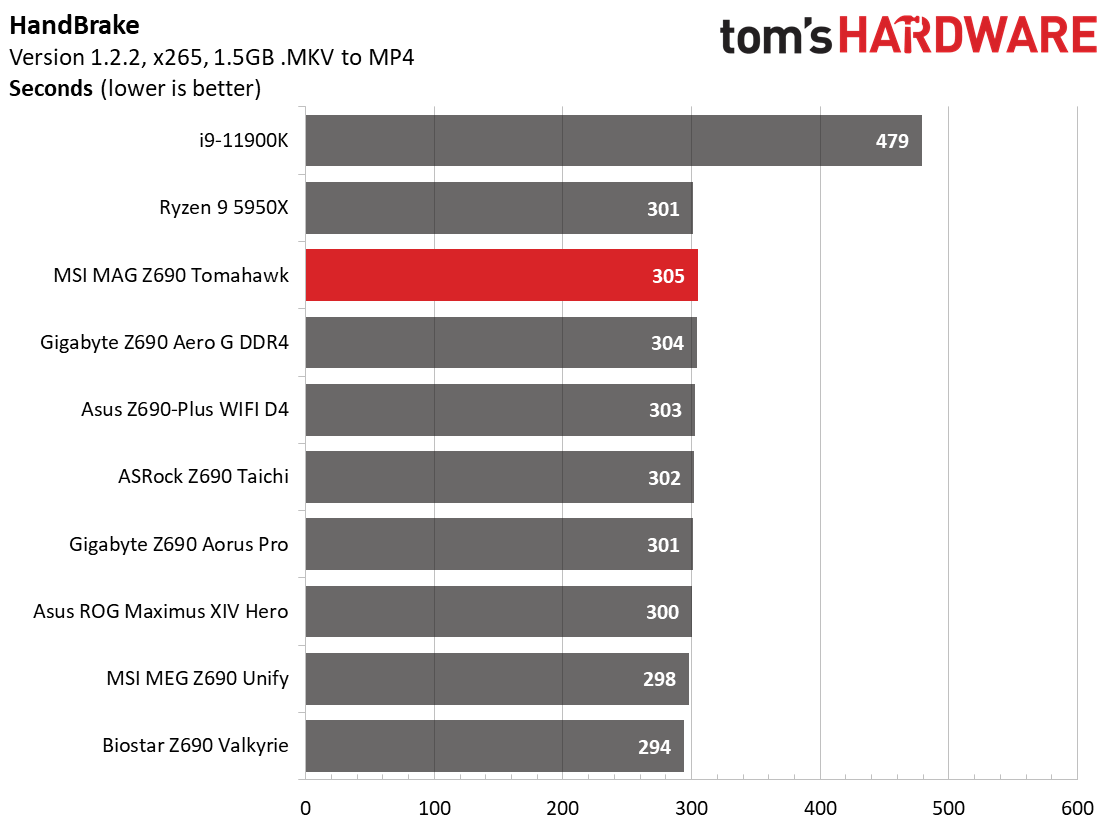
In LAME testing, the Z690 Tomahawk was the second-fastest, at 9.61 seconds. While being first is a nice achievement, all of our DDR5 datasets are within 0.09 seconds from the slowest to fastest so the difference is minimal. The outcome from our Corona testing is similar, with the Tomahawk completing the benchmark in 52 seconds which is a mediocre result.
Handbrake, however, was a tale of two tests. In the x264 portion, the Tomahawk was average, while in the x265 test, it was the slowest result, even running slower than the DDR4 boards (by one and two seconds, respectively). The 305 seconds isn’t too far off the median, around 300 seconds. Nothing alarming, but it’s certainly worth noting.
3D Games and 3DMark

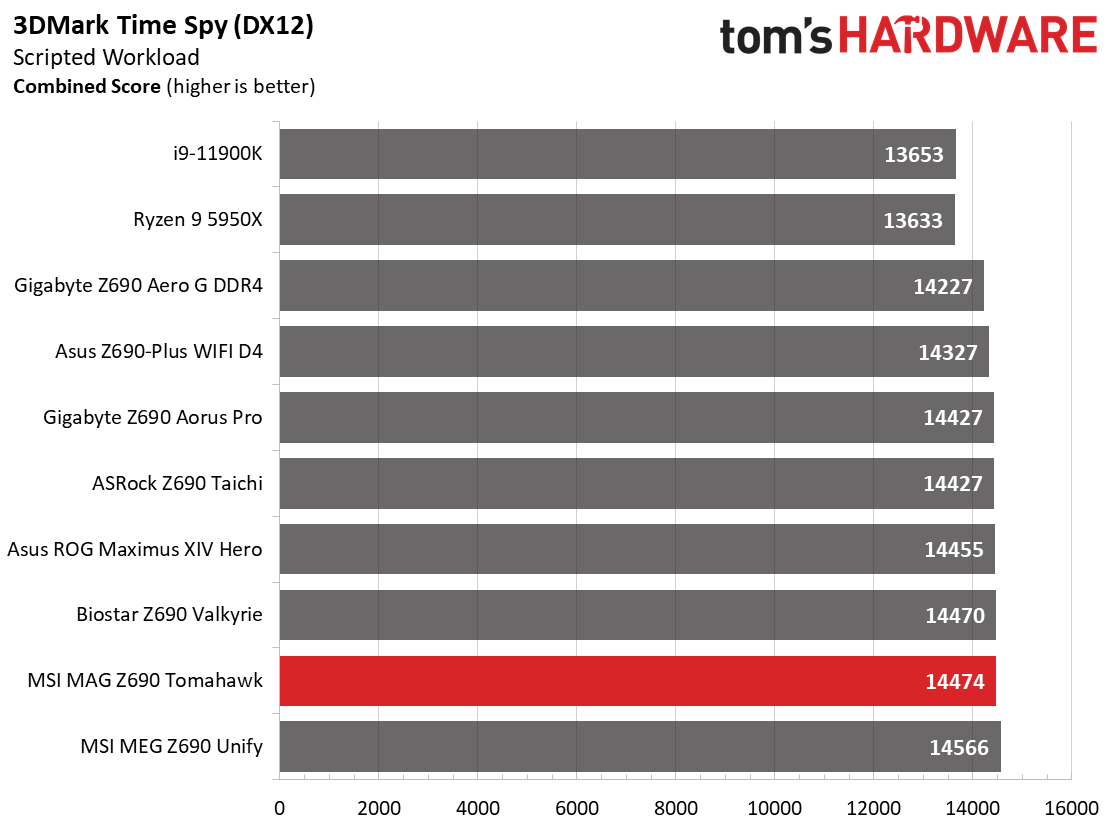
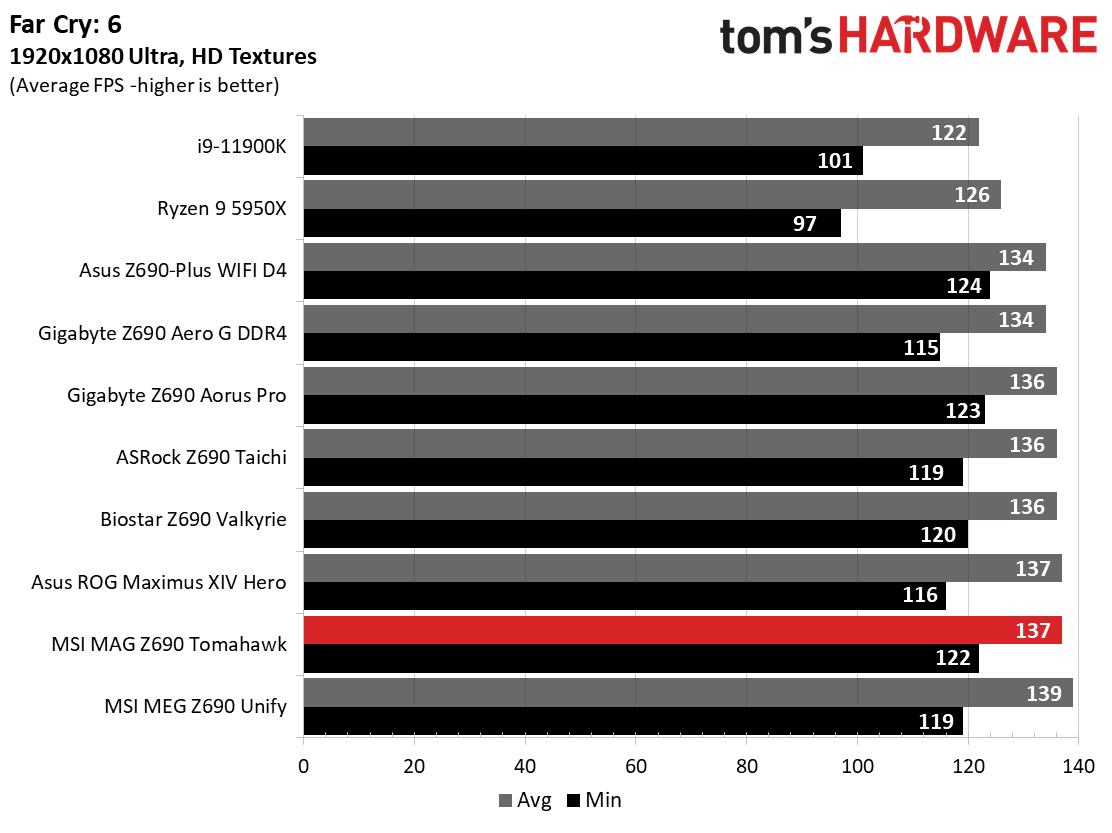

Starting with the launch of the Z690 chipset, we’ve updated our game tests. We’ve updated Far Cry: New Dawn to Far Cry 6 and shifted from F1 2020 to F1 2021. We run the games at 1920x1080 resolution using the Ultra preset (details listed above). As the resolution goes up, the CPU tends to have less of an impact. The goal with these settings is to determine if there are differences in performance at the most commonly used resolution with settings most people use or at least strive for. We expect the difference between boards in these tests to be minor, with most falling within the margin of error differences. We’ve also added a minimum FPS value, as that can affect your gameplay and immersion experience.
Get Tom's Hardware's best news and in-depth reviews, straight to your inbox.
In F1 2021, the Z690 Tomahawk averaged 166 frames per second (FPS) with minimums of 142 fps. Both values are the most we’ve seen so far in a set of tightly grouped data. In Far Cry 6, it’s a similar story, with the Tomahawk posting 122 fps minimums and 137 fps average. Both of these are toward the top of the charts.
In our synthetic 3D benchmarks, the Tomahawk scored 14,474 in Time Spy (good for 2nd place) and 16,989 in Fire Strike Extreme. Both results are negligibly higher than average. Overall, the Tomahawk WIFI performed well in both our synthetic 3D results and our games.
Power Consumption / VRM Temperatures
We used AIDA64’s System Stability Test with Stress CPU, FPU and Cache enabled for power testing, using the peak power consumption value. The wattage reading is from the wall via a Kill-A-Watt meter to capture the entire PC minus the monitor. The only variable that changes is the motherboard; all other parts are the same.
At idle, the Z690 Tomahawk WIFI consumed 53W while under load and peaked at 307W. Load wattage is right around the average, while idle was on the better side of the results. Depending on the board and its default settings, you may see curious power and temperature profiles between stock and overclocked situations, and we run into that here. Leaving the board to its own devices yields the same 4.9/3.7 GHz clocks as the others but uses a lot more voltage than needed to get there, causing higher temperatures and more power consumption than needed.
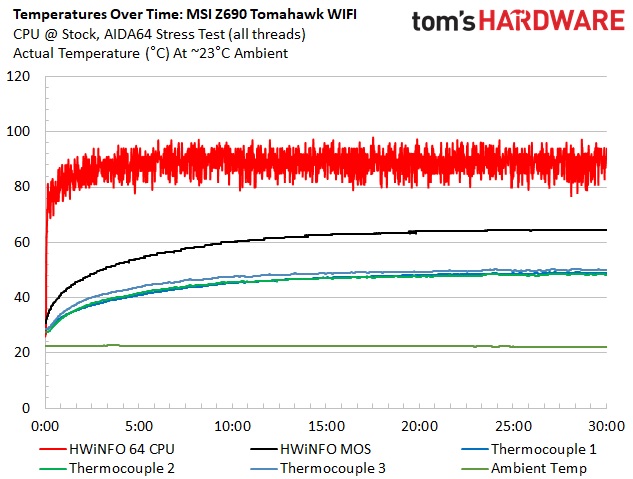



VRM temperatures on our Z690 Tomahawk topped out just above 50 degrees Celsius during stock and about 48 degrees Celsius when overclocked. With how this board runs the i9-12900K at stock speeds (higher voltage for boost), there is little difference in power use when setting things to our manual voltage. In fact, it was less. We even had minor thermal throttling when running the AIDA stress test at stock speed. Excessive voltage aside, the VRM heatsinks are more than capable of keeping the MOSFETs and other power bits underneath running well within specifications. The only thing holding you back here is the cooling solution and CPU limits.
Overclocking
Overclocking with Alder Lake is a bit different than we’re used to due to the hybrid core configuration. Now, you can overclock the P and E cores separately, though they both use the same voltage domain. You can push one and not the other, or both, so there’s some flexibility. To that end, we set an overclock to 5.1 GHz across all P-cores and 4.1Ghz on all E-cores. This yields a 200 MHz bump on the P-cores and a 400 MHz increase on the E-cores. We’re topped out on the P-cores, primarily due to temperatures, but the more efficient E-cores still have some headroom.
Overclocking with the Z690 Tomahawk and the flagship 8+8-core/24-thread i9-12900K proved painless as usual. The VRMs held up to our torture. Since we’ve found our required voltage with our first Z690 review, we entered that 1.25V value for Vcore, adjusted LLC to Mode 4, and tested successfully and with minimal vdroop.
Final Thoughts
MSI’s Z690 Tomahawk WIFI brings a lot to the table. From the low (for Z690) price point to the four M.2 sockets, PCIe 5.0 slot, and updated stealthy appearance, there’s a lot to like about this board. Even though the power delivery isn’t the most robust we’ve seen, it handled our flagship Intel i9-12900K both at stock and overclocked, all while costing significantly less than most of the other Z690 boards we’ve seen.
Performance was average overall, though there were some tests, like the Procyon suite, which scored closer to the DDR4 results than the other DDR5 boards. Gaming results were unaffected though, and we saw some of the best results we’ve seen so far. But again, the performance difference among most of the tested motherboards is hard to discern unless you’re staring at a frame counter or other benchmark score.
I would like to see at least one more Type-A port on the rear IO to bring that count up to eight. Additionally, I’d like to see some form of RGB lighting, perhaps just on the chipset heatsink like the Z590 board, but adding lighting is as easy as plugging something into the headers if you want to brighten up your build.
At around the $300 price point on Alder Lake, you’ll find an options for DDR4 and DDR5 boards. There’s the Asus TUF Gaming Z690-Plus WIFI D4 ($289.99), the ASRock Z690 Extreme WiFi ($289.99), and the Gigabyte Z690 Aero G ($289.99). While all of these boards are certainly capable, the Tomahawk WIFI is a well-rounded option, especially if you don’t need the VisionLINK functionality of the Aero G.
If you’re looking to buy the latest Alder Lake-based processors and use DDR5, the MSI Z690 Tomahawk WIFI is an excellent option around the $300 price point. It has plenty of storage options, a flagship audio codec, DDR5 and PCIe 5.0 support and an updated aesthetic over previous generations. So long as you don’t need Creator-type features, the Tomahawk WIFI should be at the top of the list for Z690 budget boards.
MORE: Best Motherboards
MORE: How To Choose A Motherboard
MORE: All Motherboard Content

Joe Shields is a staff writer at Tom’s Hardware. He reviews motherboards and PC components.
-
greenreaper Been looking at this myself, but the DDR4 version, since DDR5 availability and price isn't quite there yet - especially if you're looking for a reasonable latency. Note that at least on the DDR4 version, one of the M.2 slots appears to be only PCIe 3.x, not 4.x. But hey, if you're planning to fill them all, either you've got enough money to buy a more expensive motherboard, or you can put the slowest one in there later on.Reply -
singemagique Reply
So much yes. I fracking hate RGB on everything. I'm not even particularly fond of needlessly decorative heat spreaders on RAM.OriginFree said:Mistake report:
The "No integrated RGB" should be in the Pro column.
